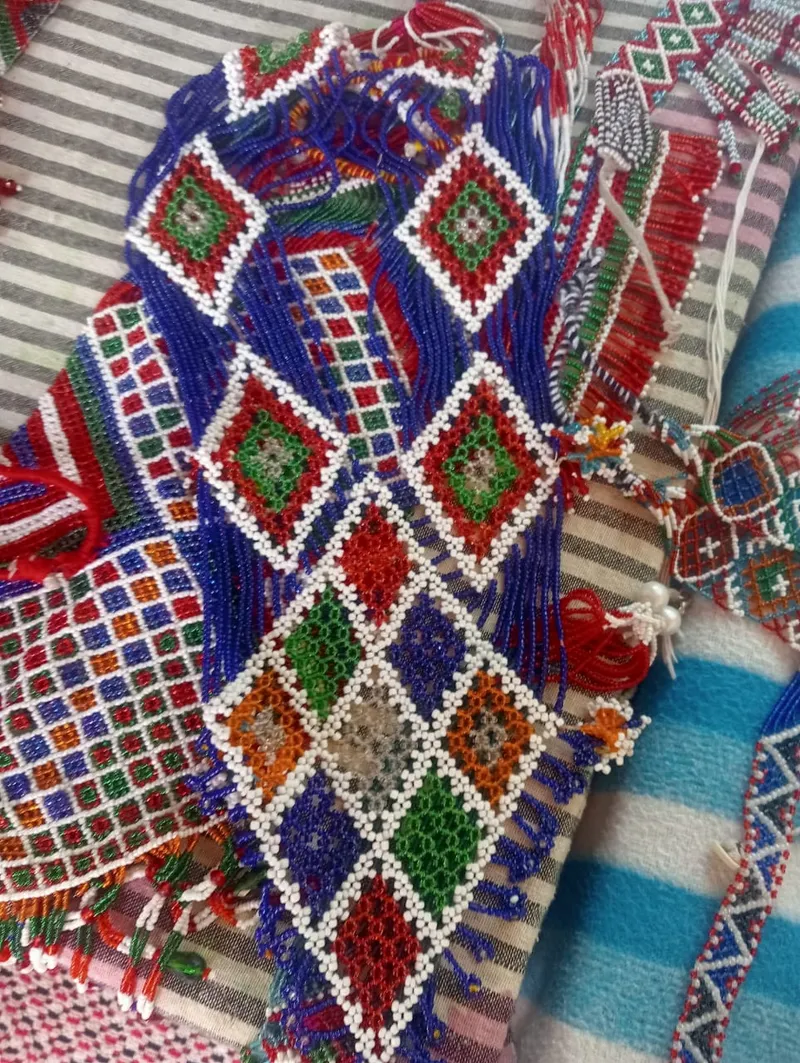Reviving traditions: How Shahida Khanum is preserving Gujjar crafts in Kashmir
In a remote village in Kashmir, Shahida Khanum is on a mission to revive the indigenous crafts of her ethnic tribal community of the Gujjars.
Amid Kashmir’s breathtaking valleys and towering peaks, Shahida Khanum is spearheading a quiet cultural revolution.
In December 2022, Khanum, a 25-year-old philosophy and social science graduate, turned her paternal home into a centre for reviving the Gujjar community’s rich art and heritage.
The Noor Centre upholds the vanishing handwork—colourful embroidery, stitching, knitting, and designing practices—unique to the Gujjars’ once pastoral lifestyle, identity, and ancestry.
The Gujjar community is scattered across Rajasthan, Gujarat, Himachal Pradesh, and Jammu and Kashmir. In fact, they account for 11.9% of Jammu and Kashmir’s Scheduled Tribes population, as per the 2011 census.
While historically, Gujjars had a nomadic lifestyle, many from the community have transitioned to agricultural and pastoral livelihoods. Nonetheless, some community members maintain semi-nomadic lifestyles, particularly in the mountainous regions of Jammu and Kashmir and Himachal Pradesh, where they seasonally migrate with their livestock for fresh pasture.

Despite having a sizeable population, the Gujjar community’s status in the government and broader society has been a subject of debate and contention. They have been advocating to be recognised as a Scheduled Tribe (ST), which would afford them certain benefits and protections under Indian laws.
However, their classification varies from state to state, leaving the community in a socio-political struggle.
Today, Khanum’s Noor Centre—located in the Aragam village near Bandipora, North Kashmir—has become a knowledge and skilling hub for young women from the ethnic community to reclaim their identity and sow the seeds for financial independence in a largely patriarchal structure.
Celebrating native identities
Khanum’s life plans did not involve dedicating her life to reviving the community’s artistic customs. While studying at the Government Women’s College in Srinagar, she was a wife and a mother to two young girls.
All she aimed for was a job—preferably a government job—to complement her husband’s income, who works with India’s Border Security Forces (BSF). However, sparse opportunities and the compulsion to travel for work made Khanum take a closer look at her roots to find business opportunities.
When she did, she recalled one of her school projects, where she and her friends did a presentation on different tribal heritage at a cultural event in Bhopal.

The women at the centre learn beaded jewellery making, knitting and embroidery on scarves and caps.
“When it came to our own roots, we had nothing to show and no reference points to go back to because the younger generation had completely moved away from the jewellery, accessories, and apparel indigenous to us,” Khanum tells SocialStory.
“I thought, why not start something of my own that would serve both purposes,” she adds.
Khanum spoke to the matriarchs in the Gujjar community to learn more about the traditional arts and crafts, beaded jewellery making, knitting, and embroidery, including Sozni, a needle-point embroidery technique, and Laska, a colourful, intricately embroidered cap.
With the help of her father Abdul Majeed—a government employee who offered his house—she set up the Noor Centre, where women in their 20s and young mothers could come and learn about the vanishing art form.
In the beginning, she took out a loan of Rs 3 lakh from the District Industries Centre Loan Scheme for Tiny Industries.
Since then, Khanum—also a singer—has been bearing the expenses of running the centre by herself. She uses the money from local cultural events to buy raw materials and cover training costs.
Social media came in handy to spread the word about Noor Centre among the community members. Today, its second batch has around 50 women who attend training and teach at the centre every weekday between 10 AM and 3 PM. Its first batch had 45 to 50 students who passed out in 2023.
Among them is 25-year-old professional designer Kulsuma Yusuf, who found an opportunity to upskill herself at Khanum’s centre.
“For the last four years, I have been running my boutique. Here at Noor, I have learnt ways to incorporate our traditional styles into my designs, thereby making them mainstream,” says Yusuf, who runs her boutique in Chitti Bandi village near Aragam.
She believes young women in this region can become financially independent if they learn basic tailoring skills. “In this region, most women prefer getting their garments stitched over buying readymade clothes. Tailoring opens up tremendous scope for women to be financially independent even after marriage, and I want to be a part of this change,” she adds.

Khanum’s mission rekindles a sense of identity and pride among the families of young girls and women, bringing a sense of nostalgia to their cultural tapestry and making her efforts look remarkable and, therefore, worthy of time and resources.
“Community members are happy to send their daughters to learn these skills and revive their tradition,” says Khanum.
Last year, with the help of the NGO Tribal Cooperative Marketing Development Federation of India Limited, she presented her work at cultural events in Ladakh and Ranchi, gaining acknowledgement on a national platform.
Another student, 24-year-old Tahira Khanum says she has learnt to add a twist of modernity to the traditional kameez through training at Noor. She plans to start creating garments commercially, once her course ends this year.
“There is so much you can do by just adding some lining and changing some cuts in the garments that were traditionally worn by our ancestors. This is where fashion designing can be brought in,” says Tahira.
“Since we are both creators and upholders of these crafts, it is upon us to keep them alive, and what more, even flourishing,” she says.
Edited by Suman Singh






